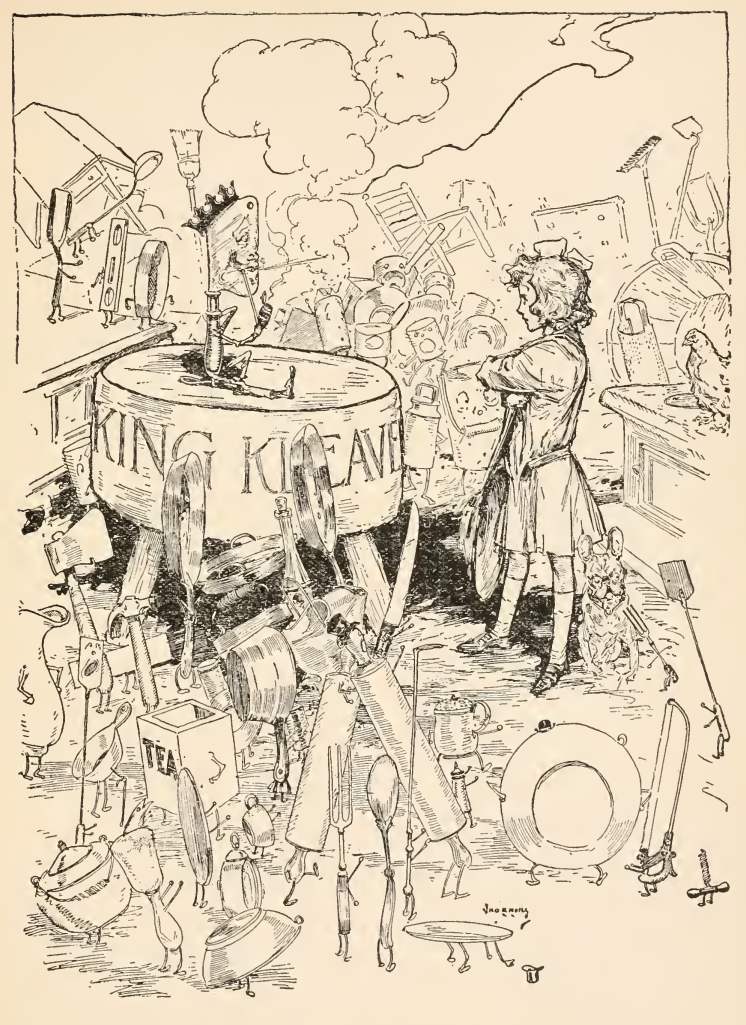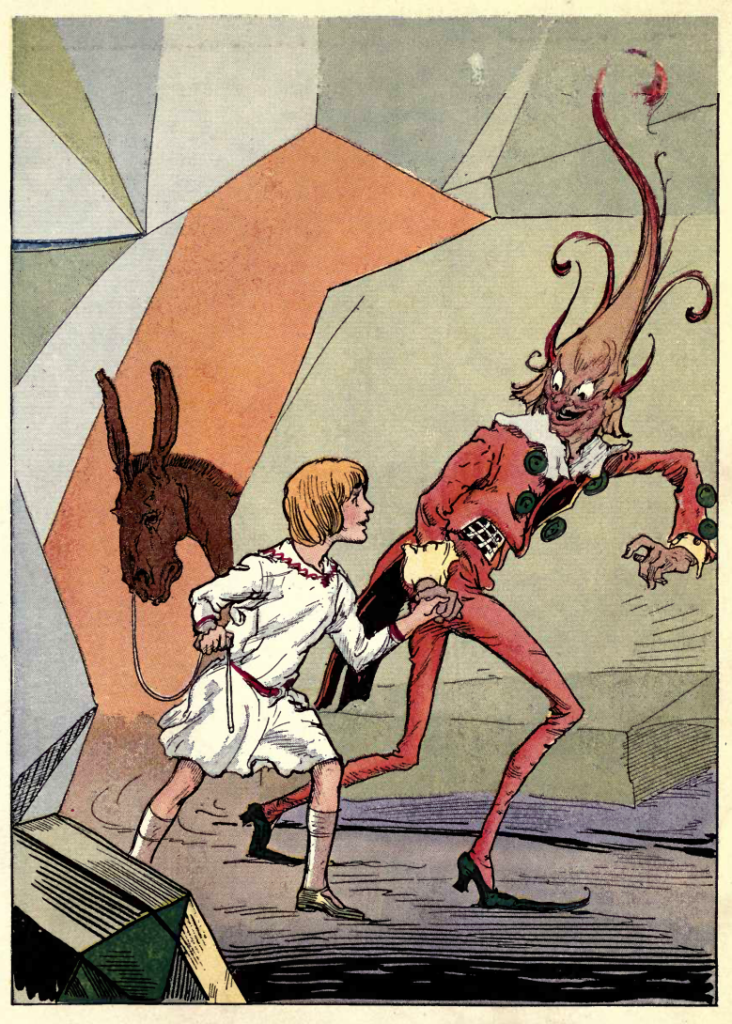
Beginning in The Patchwork Girl, or arguably with Dorothy meeting the Utensians and Bunburians (who fled human domains for survival) in The Emerald City, Ozma gradually expands her rule through similar “exploration” of other regions of Oz on the part of associates such as Dorothy. Glinda is not above sending the Scarecrow to overthrow an unfriendly local ruler, King Krewl, in The Scarecrow of Oz. He does so in the name of Ozma, even though there has never been any prior contact between the Emerald City and Jinxland: “You must remember that Jinxland is a part of Oz, and therefore you owe allegiance to Ozma of Oz” (222). Ozma’s friends even “discover” inhabited regions, although this is no discovery to the locals already there:
This fairyland is so big, however, that all of it is not yet known to its girl Ruler, and it is said that in some far parts of the country, in forests and mountain fastnesses, in hidden valleys and thick jungles, are people and beasts that know as little about Ozma as she knows of them. […] Indeed, I’m sure it will not be long until all parts of the fairyland of Oz are explored and their peoples made acquainted with their Ruler, for in Ozma’s palace are several of her friends who are so curious that they are constantly discovering new and extraordinary places and inhabitants. (Magic of Oz 55)
Ozma presumes to rule people who have never interacted with her and of whom she is almost totally ignorant. While the attitude is imperial regardless, a possibly racist aspect emerges if one considers that these people include the Tottenhots or the darker-skinned Horners and Hoppers. Baum’s attitude toward Native Americans as worthy of subjugation bleeds through in this suggestion of European imperialists’ blithe assumptions that they owned other people’s land by virtue of their alleged superiority, evidenced in, to give a few examples, the Treaty of Tordesillas or the Congress of Vienna—and, of course, the history of the US’s treatment of Indigenous peoples. In this way, Baum’s pacifist utopian fantasy fails to escape the constraints of the violence that suffused his own US worldview. Baum was always on the side of the Nome King.
Or was he? We can read the Nomes as victims of imperialism. In the video “Return to Oz is an Absolute Nightmare” on the YouTube channel In Praise in Shadows, the video essayist Zane, discussing the titular 1985 film, offers a reading of the Nome King similar to Rahn’s, that he is an industrial capitalist. But Zane also offers a contrasting reading, claiming that the Nome King of the novels rules a sovereign people and seeks to reclaim what imperialists have taken from his country. In this context, as Tuerk observes in an otherwise unconvincing argument (71), the repeated references to the Nome King’s gray, non-white skin may assume a sinister racism: “Why, he looks just like Santa Claus—only he isn’t the same color” (Ozma of Oz 164). Similarly, Ozma’s condescending attitude toward the Nome King and Nomes overall smacks of bigoted haughtiness: “Shall Ozma of Oz humble herself to a creature who lives in an underground kingdom?” (161)

Reconsider what I earlier took as an analogue for expropriation of a capitalist’s wealth. Ozma says, “[T]he kingdom of the Nomes is wonderfully rich, and all we have of precious stones and silver and gold is what we take from the earth and rocks where the Nome King has hidden them. […] For the reason that we often steal his treasures, […] the Ruler of the Underground World is not fond of those who live upon the earth’s surface” (Ozma of Oz 131). Baum emphasizes the fabulous material wealth of Oz, where gold, emeralds, rubies, diamonds, and other precious gems and metals are not precious but ubiquitous in clothing, equipment, and construction. The Emerald City itself matches but does not exceed the most dazzling accomplishment of the Nomes, the Metal Forest (Tik-Tok 218).
But as highlighted in Return to Oz, this means the Emerald City’s defining emeralds and all of Oz’s dazzling wealth is stolen from the Nomes. Also noteworthy is that the Nomes’ production of gems and precious metal is not as frivolous as creating pretty baubles to jangle at the Nome King. The Nomes eat and drink stone, soil, and metal. While their environment is not an idyll like Munchkinland’s cornfields, the Nomes are producing food for themselves.